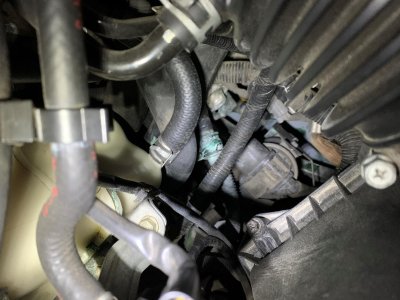- Joined
- 12 February 2005
- Messages
- 81
Need help with the old leaking coolant tank expansion. Looks like leak coming from the seams and leaking down to the bottom hose, trickling down more hoses ending on the garage floor. There are about a dozen small spots the following day after coming home from my Sunday drives. Needs changing before it gets worse. OEM lasted for 20 years, so thinking of going the OEM new (old) stock route. Aside from expansion tank, coolant and upper and lower hoses, what else is needed? Any tips for a problem free remove and install? Will probably look for a mechanic to do this one but will pass along words of wisdom, as I am not mechanically inclined to do this myself. Thanks in advance for any help.














